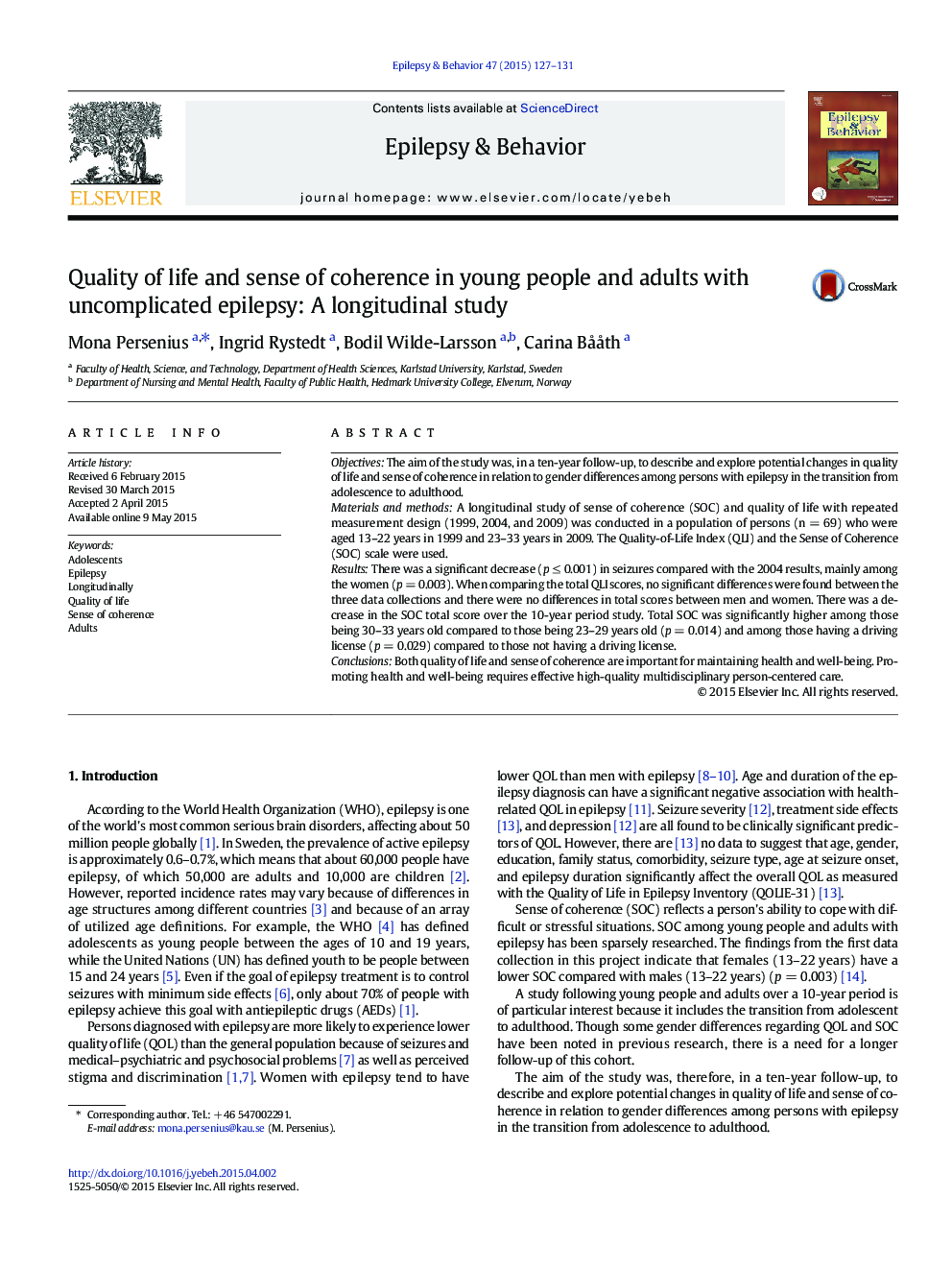| Article ID | Journal | Published Year | Pages | File Type |
|---|---|---|---|---|
| 6011054 | Epilepsy & Behavior | 2015 | 5 Pages |
â¢New insight into the transition from adolescent to adulthoodâ¢The first study to report a stable Quality of Life Index over a ten-year periodâ¢Significantly higher sence of coherence among persons with a driving license
ObjectivesThe aim of the study was, in a ten-year follow-up, to describe and explore potential changes in quality of life and sense of coherence in relation to gender differences among persons with epilepsy in the transition from adolescence to adulthood.Materials and methodsA longitudinal study of sense of coherence (SOC) and quality of life with repeated measurement design (1999, 2004, and 2009) was conducted in a population of persons (n = 69) who were aged 13-22 years in 1999 and 23-33 years in 2009. The Quality-of-Life Index (QLI) and the Sense of Coherence (SOC) scale were used.ResultsThere was a significant decrease (p â¤Â 0.001) in seizures compared with the 2004 results, mainly among the women (p = 0.003). When comparing the total QLI scores, no significant differences were found between the three data collections and there were no differences in total scores between men and women. There was a decrease in the SOC total score over the 10-year period study. Total SOC was significantly higher among those being 30-33 years old compared to those being 23-29 years old (p = 0.014) and among those having a driving license (p = 0.029) compared to those not having a driving license.ConclusionsBoth quality of life and sense of coherence are important for maintaining health and well-being. Promoting health and well-being requires effective high-quality multidisciplinary person-centered care.
